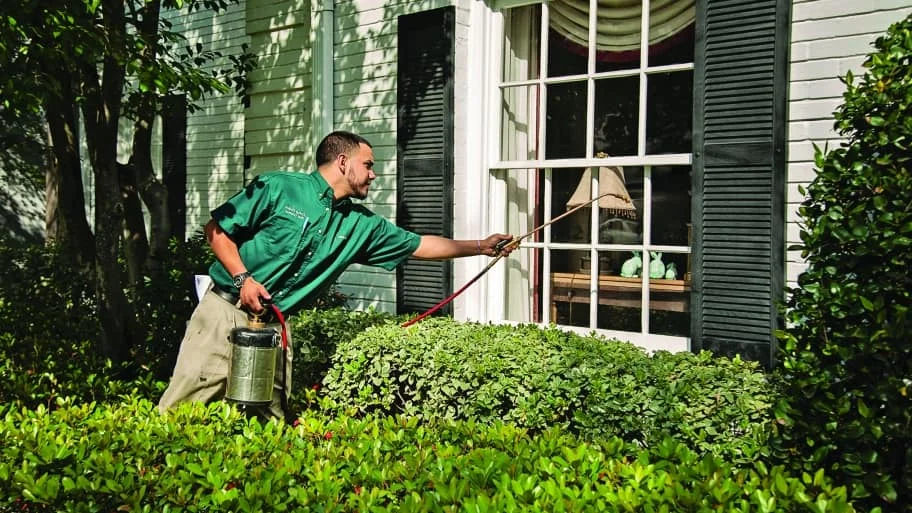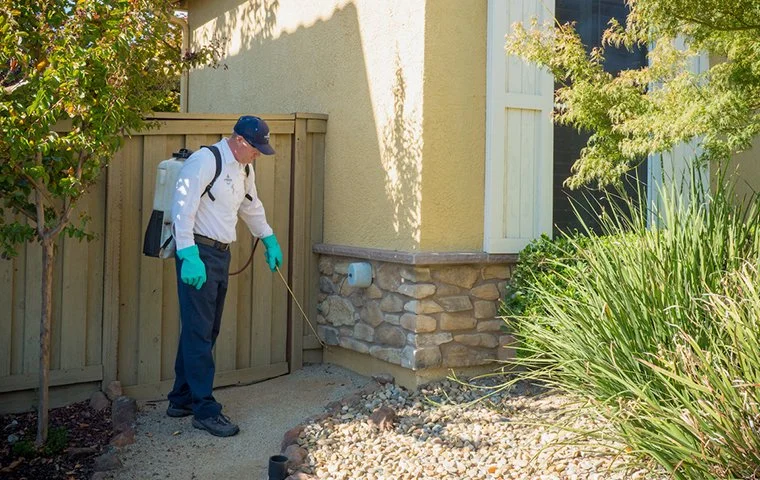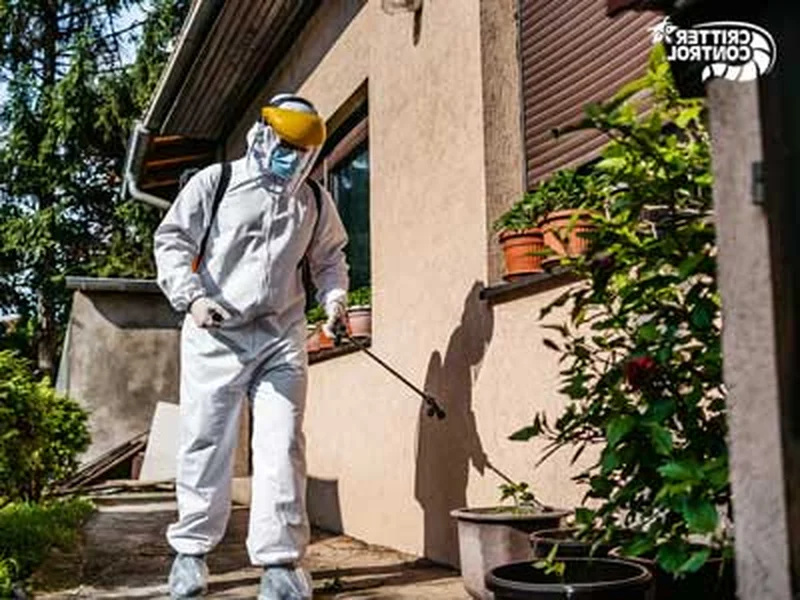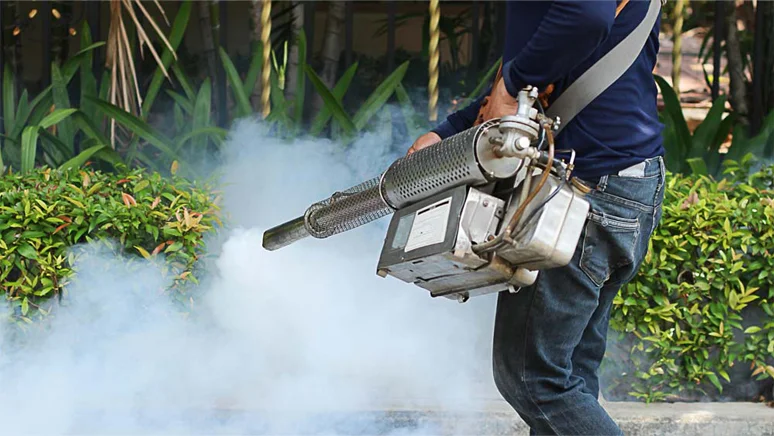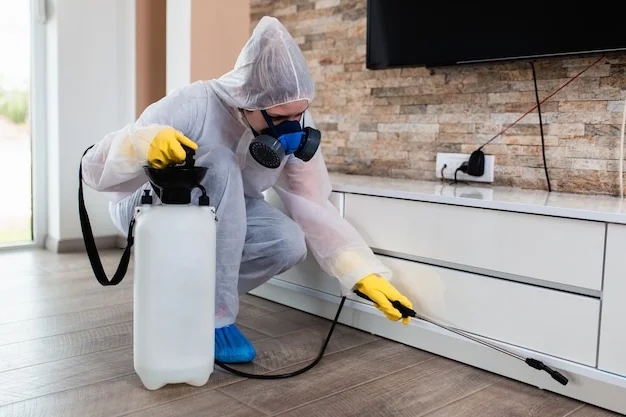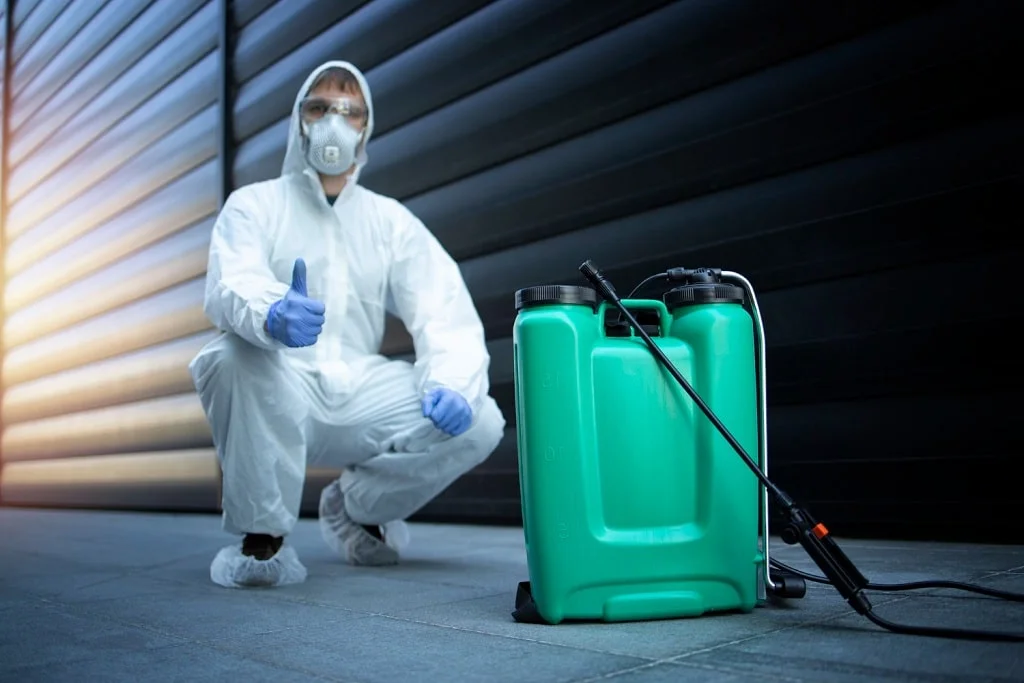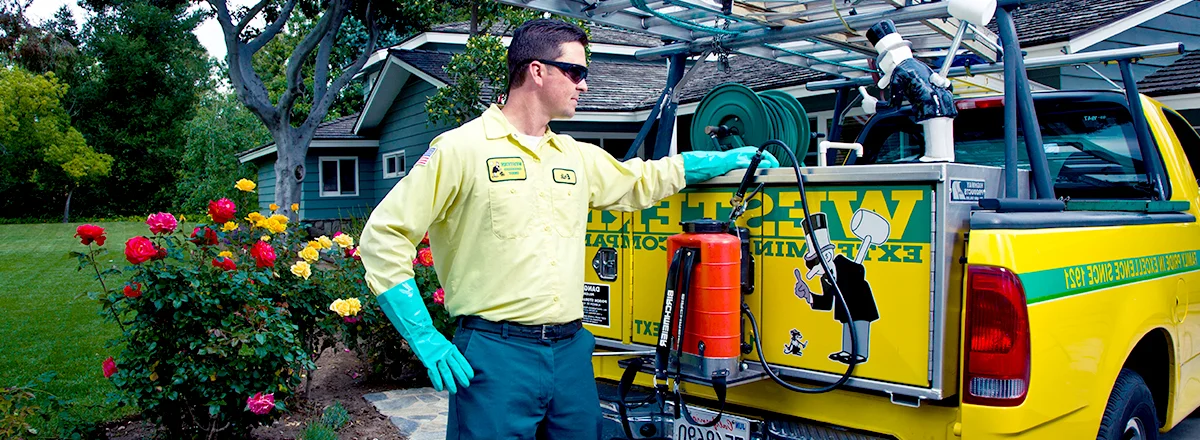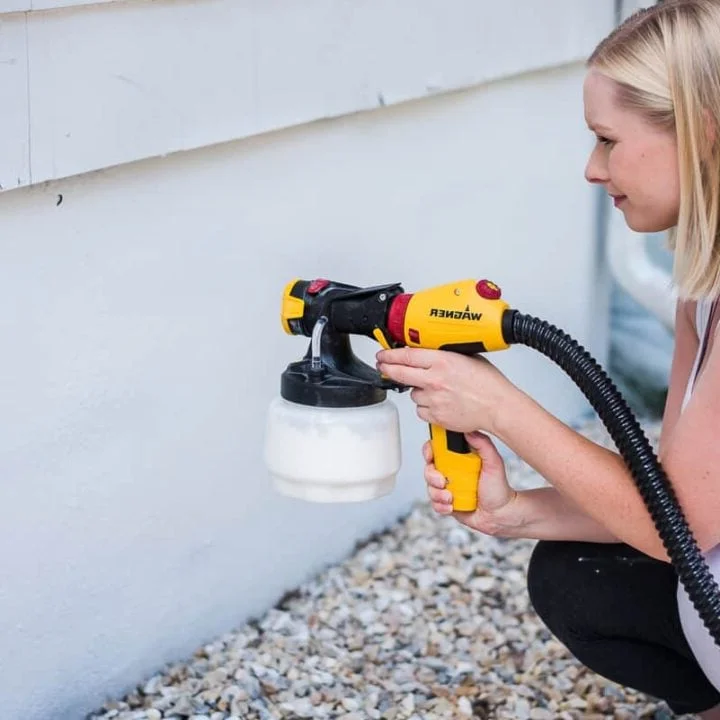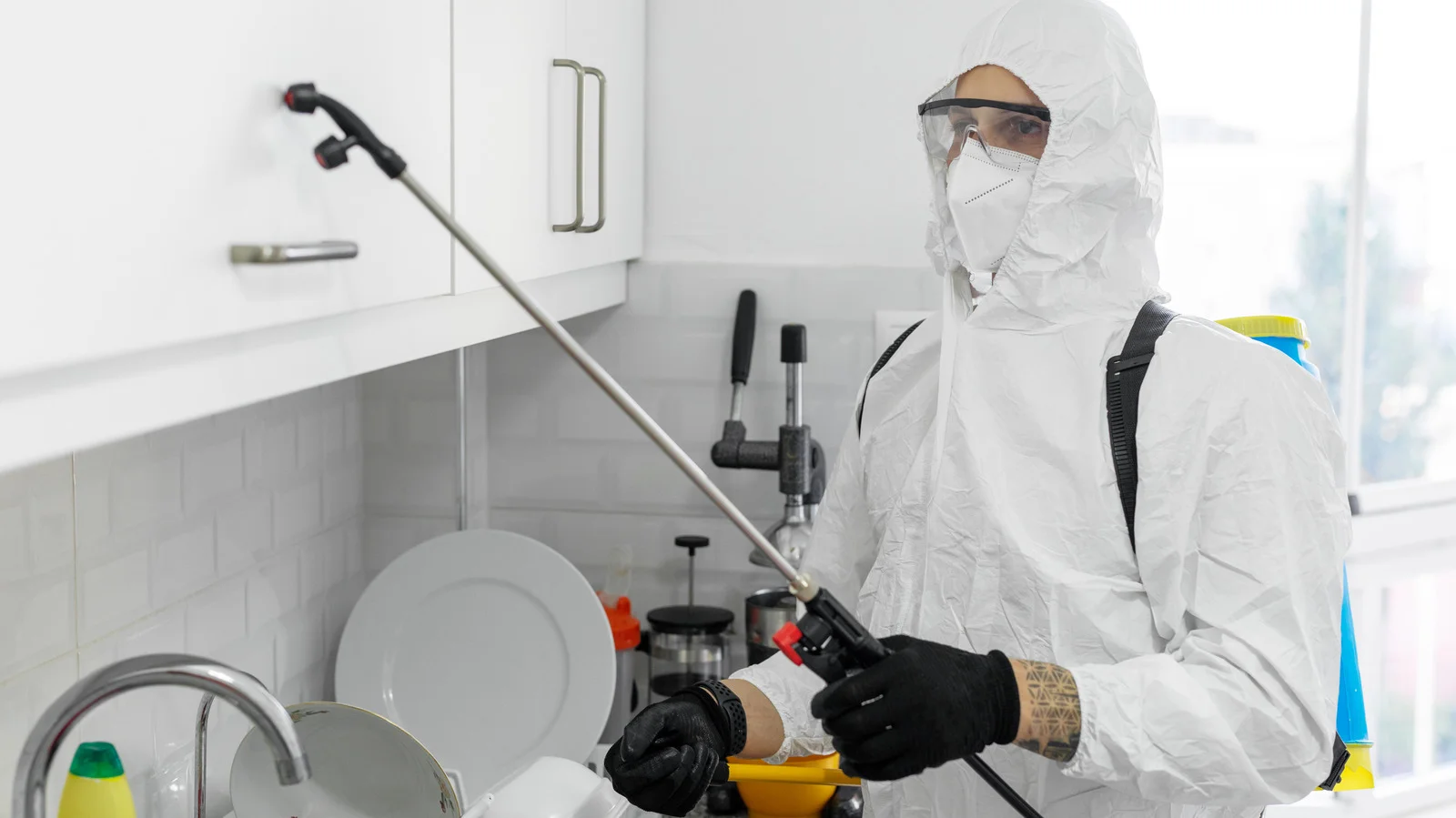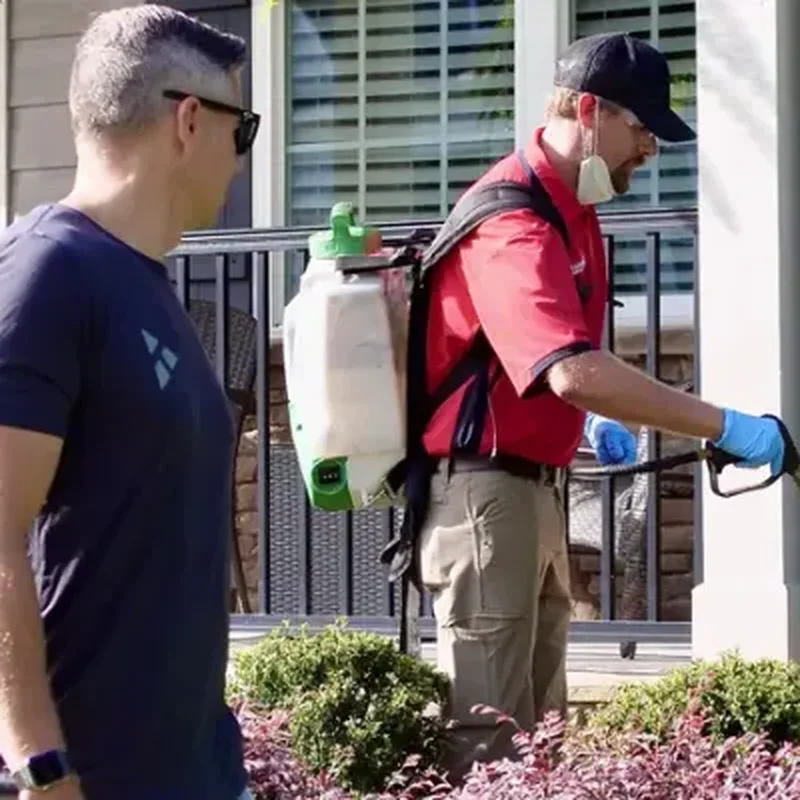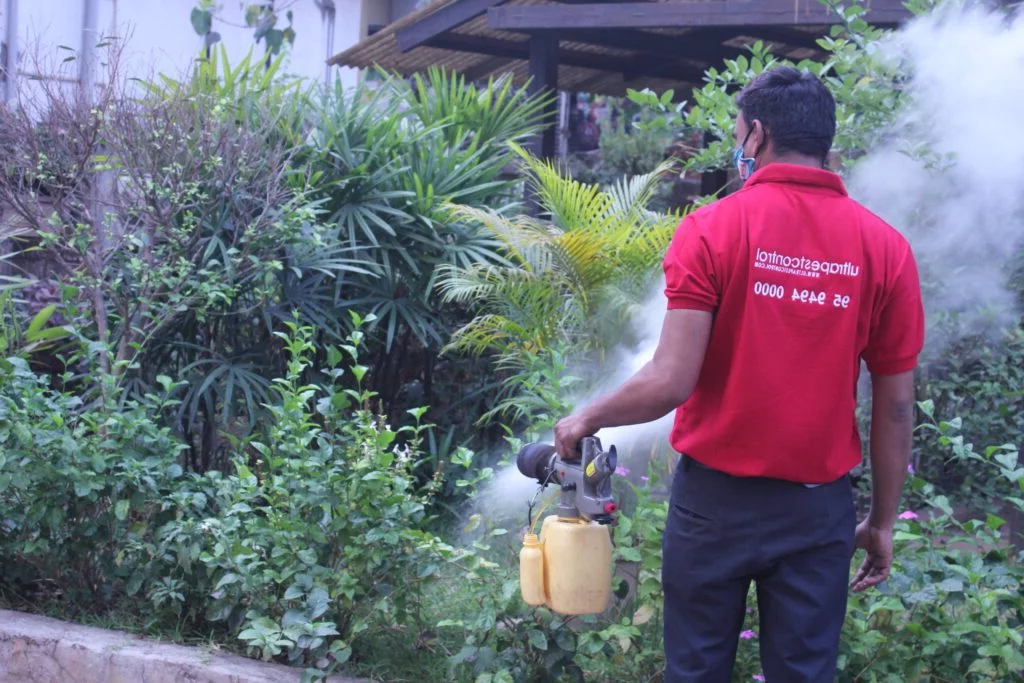The angry buzzing of wasps around your property is more than just an annoyance – it represents a genuine threat to the safety and comfort of your family, guests, and pets. Unlike their beneficial honeybee cousins, wasps are aggressive defenders of their territory who can sting multiple times without dying, injecting painful venom that can cause severe allergic reactions in sensitive individuals. Effective wasp control requires understanding the complex social structures of different wasp species, locating their well-hidden nests, and implementing safe removal strategies that eliminate the threat without endangering people or beneficial insects nearby.
Wasp colonies can grow from a single queen in spring to thousands of aggressive workers by late summer, creating increasingly dangerous situations as populations peak and food sources become scarce. These intelligent insects build their nests in countless locations around homes and businesses, from obvious spots like eaves and trees to hidden areas inside wall voids, underground burrows, and attic spaces. Professional wasp extermination services provide the specialized equipment, protective gear, and proven techniques necessary to safely eliminate wasp threats while preventing the recurring infestations that often follow inadequate DIY removal attempts.
Discovered a wasp nest near your home? Our expert team provides
emergency wasp removal
24/7 and safe
wasp nest elimination to protect your family immediately.
Get urgent help now!
Common Wasp Species and Their Behaviors
Understanding the specific type of wasp species on your property is crucial for safe and effective control because different wasps have distinct nesting habits, aggression levels, and colony structures that influence removal approaches. Professional identification ensures that appropriate safety measures and treatment methods are selected for each unique situation.
Yellow Jackets
Yellow jackets are highly aggressive wasps that build large underground colonies
Yellow jackets are among the most aggressive and dangerous wasps commonly encountered around homes and businesses. These wasps are easily recognized by their bright yellow and black striped bodies, relatively small size (about 1/2 inch long), and their characteristic rapid, side-to-side flight pattern before landing. Unlike many other wasp species, yellow jackets are extremely territorial and will aggressively defend their nests from perceived threats, often attacking in large numbers when disturbed.
Most yellow jacket colonies are built underground in abandoned rodent burrows, tree roots, or other soil cavities, making them particularly dangerous because people often accidentally step on or disturb nests without warning. By late summer, a mature yellow jacket colony can contain 5,000-15,000 workers, creating an extremely hazardous situation for anyone who ventures too close. These wasps are also attracted to sugary foods and drinks, making outdoor dining and activities especially risky when yellow jackets are active nearby.
Paper Wasps
Paper wasps build distinctive umbrella-shaped nests under eaves and overhangs
Paper wasps are generally less aggressive than yellow jackets but can still deliver painful stings when they feel threatened or when their nests are disturbed. These wasps are larger than yellow jackets, measuring about 3/4 to 1 inch in length, with longer legs that dangle during flight and more varied coloration ranging from brown and yellow to reddish-brown patterns. They build distinctive umbrella-shaped nests from chewed wood pulp that has a paper-like appearance, hence their common name.
Paper wasp nests are typically built in exposed locations under eaves, deck railings, door frames, and other protected overhangs where they're easily visible once established. While paper wasp colonies are smaller than yellow jacket nests, usually containing 200-300 workers at peak season, they're often located in high-traffic areas where human contact is more likely. These wasps are actually beneficial predators that control many pest insects, but their proximity to human activity often makes removal necessary for safety reasons.
Bald-Faced Hornets
Bald-faced hornets are actually large wasps rather than true hornets, but they're among the most intimidating stinging insects due to their size (up to 1.5 inches long) and aggressive nature. These imposing insects are black with distinctive white markings on their face and body, and they build large, enclosed, football-shaped nests that can reach the size of a basketball or larger by the end of the season.
Bald-faced hornet nests are typically constructed 10-15 feet high in trees, shrubs, or on building structures, and can contain 400-700 workers by late summer. These wasps are extremely protective of their nests and will aggressively attack perceived threats from distances of up to 25 feet from the nest. Their stings are particularly painful due to their large size and the amount of venom they can inject, making professional removal essential for safety.
Mud Daubers
Mud daubers are solitary wasps that don't form colonies like their social cousins, making them generally less aggressive and dangerous to humans. These wasps are easily identified by their distinctive narrow waist and long legs, and they build characteristic mud nests that look like pipe organs or small pottery vessels attached to walls, eaves, and other protected surfaces.
While mud daubers rarely sting unless directly handled, their nests can become unsightly and their presence may indicate suitable conditions for more aggressive wasp species. These wasps are actually beneficial predators that control spider populations, but their nesting activities near human activity areas sometimes require professional management to prevent attraction of other, more dangerous wasp species.
Understanding Wasp Dangers and Health Risks
Wasp stings pose serious health risks that extend far beyond temporary pain and discomfort. Unlike honeybees, wasps can sting multiple times in rapid succession, injecting increasing amounts of venom with each sting. For individuals with wasp venom allergies, even a single sting can trigger anaphylactic shock, a life-threatening condition that requires immediate medical intervention. Understanding these risks emphasizes why professional wasp removal is essential rather than attempting dangerous DIY approaches.
The danger level increases dramatically as wasp colonies mature throughout the summer season. Late-season wasps are more aggressive due to declining food sources and colony stress, while peak population numbers mean that disturbing a nest can result in attacks by hundreds of angry wasps simultaneously. This combination creates potentially lethal situations that require professional expertise and specialized protective equipment for safe resolution.
Immediate Physical Dangers
-
Multiple Sting Capability Unlike bees, wasps retain their stingers and can sting repeatedly, injecting increasing amounts of venom with each sting. A single aggressive wasp can deliver 10 or more stings in rapid succession.
-
Coordinated Group Attacks When a nest is threatened, wasps release alarm pheromones that trigger coordinated attacks by dozens or hundreds of colony members, creating overwhelming and potentially fatal situations.
-
Potent Venom Injection Wasp venom contains multiple toxic compounds including histamines, enzymes, and neurotoxins that cause immediate pain, swelling, and potentially severe systemic reactions.
-
Unpredictable Aggression Wasps may attack without apparent provocation, particularly during late summer when colonies are stressed and food sources are scarce, making encounters especially dangerous.
-
Pursuit Behavior Aggressive wasp species like yellow jackets will chase perceived threats for considerable distances, making escape difficult once an attack begins.
Allergic Reactions and Medical Emergencies
Wasp sting allergies affect approximately 3-5% of the population, but reactions can develop suddenly even in people with no previous history of sensitivity. Anaphylactic reactions can occur within minutes of being stung, causing difficulty breathing, rapid pulse, loss of consciousness, and potentially death if not treated immediately with epinephrine and emergency medical care.
Even non-allergic individuals can experience dangerous reactions when subjected to multiple stings, as the cumulative venom load can overwhelm the body's ability to process the toxins. Children, elderly individuals, and those with compromised immune systems face higher risks from wasp encounters, making professional nest removal a critical safety priority for protecting vulnerable family members.
-
Anaphylactic Shock Life-threatening allergic reactions that can cause respiratory failure, cardiovascular collapse, and death within minutes of being stung, requiring immediate epinephrine administration and emergency medical care.
-
Delayed Hypersensitivity Some individuals develop increased sensitivity to wasp venom over time, meaning that previous tolerance doesn't guarantee safety from future severe reactions.
-
Cumulative Venom Effects Multiple stings can cause toxic reactions even in non-allergic individuals, potentially leading to kidney damage, neurological problems, and other serious complications.
-
Secondary Infections Wasp stings create wounds that can become infected, particularly when scratched or improperly treated, leading to additional medical complications.
-
Psychological Trauma Severe wasp attacks can cause lasting anxiety, phobias, and behavioral changes that affect quality of life and outdoor activities for years after the incident.
Emergency Preparedness
If you or family members have known wasp allergies, keep epinephrine auto-injectors readily available and ensure everyone knows how to use them. However, the best protection is professional wasp nest removal before dangerous encounters can occur.
Identifying Wasp Nests and Common Locations
Locating wasp nests requires careful observation and understanding of each species' preferred nesting sites. Professional identification is crucial because nest location affects removal approach, safety requirements, and the likelihood of successful elimination. Some nests are obvious and easily spotted, while others remain hidden until colonies reach dangerous sizes.
Early detection of wasp nests allows for safer removal when colonies are smaller and less aggressive. However, many homeowners don't notice wasp activity until mid to late summer when colonies reach peak size and wasps become more noticeable as they search for food sources around human activity areas.
Above-Ground Nest Locations
-
Building Eaves and Overhangs Paper wasps frequently build nests under roof eaves, porch overhangs, and deck railings where they're protected from weather but easily accessible for colony expansion.
-
Trees and Shrubs Bald-faced hornets and some yellow jacket species construct large nests high in tree branches or dense shrubs, often becoming visible only after leaves fall in autumn.
-
Wall Cavities and Voids Wasps often enter small openings in siding, soffits, or foundation walls to build nests inside wall voids where they're protected but difficult to locate and remove.
-
Attics and Crawl Spaces Some species access attics through small openings and build large nests in insulation or structural spaces where they remain undetected until populations become substantial.
-
Outdoor Structures Sheds, garages, playground equipment, and outdoor furniture provide sheltered locations where wasps can build nests close to human activity areas.
Underground and Hidden Nests
Underground wasp nests present unique challenges because they're often discovered accidentally when people step on or near the entrance, triggering immediate aggressive responses from colony defenders. These nests can be particularly large because underground locations provide protection from weather and predators, allowing colonies to reach maximum size.
Identifying underground nests requires observing wasp flight patterns and looking for small entrance holes in the ground, often surrounded by small piles of excavated soil. Professional detection techniques can locate these hidden nests before accidental encounters occur, enabling safe removal planning.
-
Abandoned Rodent Burrows Yellow jackets commonly take over old mouse, rat, or chipmunk burrows, expanding them to accommodate growing colonies that can reach enormous sizes underground.
-
Tree Root Systems Natural cavities around tree roots provide protected nesting sites for ground-nesting wasps, often in areas where people walk or play regularly.
-
Foundation Areas Gaps or cavities under building foundations, steps, or concrete slabs can house large wasp colonies in areas where human contact is likely during maintenance or landscaping.
-
Landscaping Features Decorative rock walls, retaining walls, and landscape timbers can provide hidden spaces for wasp nests that remain undetected until disturbed by yard work.
-
Irrigation and Utility Areas Underground utilities, irrigation boxes, and meter housings can provide suitable nesting sites that create hazards for service workers and homeowners.
Signs of Wasp Activity
Professional wasp detection involves observing behavioral patterns and environmental signs that indicate nest presence before direct nest discovery. Understanding these indicators helps identify wasp problems early when removal is safer and more effective than waiting until colonies reach peak size and aggression levels.
Consistent wasp activity in specific areas, particularly repeated flight patterns to and from the same general location, often indicates nearby nest sites. Professional inspectors use these behavioral cues to locate hidden nests that might not be immediately visible to casual observation.
-
Consistent Flight Patterns Regular wasp traffic to and from specific locations, particularly during morning and evening hours when activity peaks, indicates nearby nest sites.
-
Aggressive Behavior Wasps that approach or follow people in specific areas may be defending nearby nests, even if the nest location isn't immediately apparent.
-
Increased Activity Growing numbers of wasps in an area over time suggests an established colony that's expanding and becoming more noticeable as population increases.
-
Paper or Chewing Sounds Audible sounds of wasps chewing wood to create nest materials or the rustling of nest construction activity in wall voids or hidden areas.
-
Visual Nest Material Small pieces of chewed wood pulp or paper-like material around potential nesting sites where wasps are actively building or expanding nests.
Professional Wasp Removal and Control Methods
Professional wasp removal requires specialized equipment, protective gear, and proven techniques that ensure complete nest elimination while maintaining safety for people and property. DIY wasp removal attempts are extremely dangerous and often result in incomplete elimination that leads to recurring problems and increased aggression from surviving wasps.
Safety Equipment and Protective Gear
Professional wasp removal technicians use specialized protective equipment that provides complete coverage against wasp stings while allowing mobility and visibility necessary for safe nest removal. This equipment is designed specifically for stinging insect work and provides protection that's impossible to achieve with improvised home protective measures.
The protective gear includes full-body suits with multiple layers of sting-resistant material, reinforced gloves, and ventilated headgear that prevents wasp access while maintaining clear vision. Professional equipment also includes specialized tools for reaching high or hidden nests safely without compromising protection.
Targeted Treatment Applications
Professional wasp treatments use specialized products and application methods designed specifically for wasp colony elimination. These treatments are more effective than consumer products because they're formulated to penetrate nest materials and eliminate all colony members, including those deep within the nest structure who might survive surface treatments.
Treatment timing is crucial for maximum effectiveness. Professional applications are typically conducted during early morning or evening hours when most workers are present in the nest, ensuring that the maximum number of colony members are eliminated during the initial treatment application.
-
Residual Insecticide Applications Long-lasting treatments applied directly to nest entrances and surrounding areas that eliminate wasps as they contact treated surfaces while entering or leaving the nest.
-
Dust Formulations Specialized insecticidal dusts that penetrate deep into nest cavities and wall voids, providing thorough elimination of wasps in hard-to-reach locations.
-
Aerosol Treatments Fast-acting sprays that provide immediate knockdown of aggressive wasps while delivering residual control that continues eliminating returning colony members.
-
Injection Treatments Specialized equipment that delivers treatments directly into wall voids, underground nests, and other enclosed spaces where wasps have built inaccessible colonies.
-
Exclusion Materials Professional-grade sealing materials used to prevent wasp re-entry into treated areas and eliminate access to potential future nesting sites.
Nest Removal and Cleanup
Complete wasp nest removal is essential for preventing future infestations because remaining nest materials can attract new wasp colonies in subsequent seasons. Professional removal includes not only the visible nest structure but also thorough cleanup of nest materials, dead wasps, and pheromone residues that could attract other wasps.
Nest removal timing is critical for safety and effectiveness. Premature removal attempts can result in attacks by surviving wasps, while delayed removal may allow escape of some colony members who could establish new nests nearby. Professional technicians determine optimal removal timing based on treatment effectiveness and species-specific behavior patterns.
-
Complete Nest Structure Removal Physical removal of entire nest structures including surrounding attachment points and materials that could provide foundation for future nest construction.
-
Dead Wasp Cleanup Thorough removal of dead wasps and nest debris that could attract scavenger insects or provide pheromone cues that attract new wasp colonies.
-
Pheromone Elimination Treatment of nest sites with specialized products that neutralize wasp pheromones and reduce the likelihood of future nest establishment in the same location.
-
Site Decontamination Thorough cleaning and treatment of nest sites to eliminate all traces of wasp activity and prepare areas for preventive treatments that discourage future nesting.
-
Disposal Protocols Proper disposal of nest materials and dead wasps using methods that prevent escape of any surviving wasps and eliminate potential attractants for future infestations.
Follow-up and Prevention
Professional wasp control includes follow-up inspections to ensure complete elimination and identify any surviving wasps or satellite nests that might have been missed during initial treatment. Prevention services focus on identifying and addressing conditions that attract wasps while implementing barriers that discourage future nest establishment.
Long-term wasp prevention requires understanding of wasp behavior and seasonal patterns. Professional programs provide ongoing monitoring and prevention services that address wasp attractants while implementing exclusion measures that prevent access to preferred nesting sites.
Don't risk dangerous wasp encounters! Our professional
wasp removal services guarantee safe elimination with complete protection for your family –
contact us immediately for expert wasp control!
Why DIY Wasp Removal is Extremely Dangerous
DIY wasp removal attempts result in thousands of emergency room visits each year due to severe sting reactions, falls from ladders, and other injuries sustained during improper removal attempts. The combination of aggressive wasp behavior, inadequate protective equipment, and improper treatment methods creates extremely dangerous situations that can result in life-threatening injuries or death.
Consumer products and improvised protective measures are completely inadequate for safe wasp nest removal. Hardware store wasp sprays have limited range and effectiveness, often requiring multiple applications that increase danger exposure time. Makeshift protective gear leaves critical areas exposed while limiting vision and mobility, creating conditions for serious accidents and sting injuries.
Common DIY Dangers and Failures
-
Inadequate Protective Equipment Home-improvised protection leaves vulnerable areas exposed while reducing visibility and mobility, creating conditions for severe sting injuries and accidents during removal attempts.
-
Partial Nest Elimination Consumer products often fail to eliminate entire colonies, leaving surviving wasps that become more aggressive and may relocate to new nesting sites nearby.
-
Timing and Approach Errors Improper timing of removal attempts or wrong approach angles can trigger maximum defensive responses from entire colonies, resulting in overwhelming attacks.
-
Height and Access Dangers Many wasp nests are located in high or difficult-to-reach locations where ladder use and awkward positioning create serious fall risks during removal attempts.
-
Product Misuse and Exposure Incorrect use of insecticidal products can result in personal contamination, environmental damage, and ineffective wasp control that worsens the situation.
-
Emergency Situations Failed DIY attempts often create emergency situations requiring immediate professional intervention under more dangerous conditions than original removal would have required.
Why Professional Equipment Makes the Difference
Professional wasp removal equipment is specifically designed for stinging insect control and provides protection levels that cannot be achieved through consumer products or improvised solutions. The difference between professional and DIY equipment often means the difference between safe, successful removal and dangerous, potentially life-threatening encounters.
Professional-grade protective suits, specialized treatment products, and proper application equipment enable safe removal of even the most dangerous wasp nests. This equipment represents significant investment and training that makes professional services the most cost-effective approach when all risks and potential consequences are considered.
Insurance and Liability
Many homeowner's insurance policies don't cover injuries sustained during DIY pest control attempts, while professional services carry comprehensive liability insurance that protects property owners from accident-related claims and medical expenses.
Seasonal Wasp Activity and Optimal Control Timing
Spring (March-May)
- Queens emerge from winter hibernation
- New nest construction begins
- Small colonies with minimal aggression
Focus: Optimal time for safe nest removal when colonies are small and less aggressive. Prevention measures most effective.
Summer (June-August)
- Rapid colony growth and expansion
- Increased worker populations
- Peak nest building activity
Focus: Regular monitoring for new nests and prompt removal before colonies reach dangerous sizes.
Fall (September-November)
- Maximum colony size and aggression
- Food scarcity increases wasp-human contact
- Most dangerous period for encounters
Focus: Extreme caution required. Professional removal essential due to peak danger levels.
Winter (December-February)
- Colony death except for hibernating queens
- Old nests abandoned but may attract new colonies
- Planning period for prevention strategies
Focus: Remove old nests safely and implement prevention measures for the coming year.
Comprehensive Wasp Prevention Strategies
Effective wasp prevention focuses on eliminating the conditions that attract wasps while creating barriers that prevent nest establishment. Prevention is always safer and more cost-effective than removal of established colonies, especially when implemented before spring queen emergence when new nest sites are being selected.
Professional prevention programs combine environmental management, exclusion techniques, and monitoring strategies that reduce wasp pressure while providing early detection of any wasp activity that does occur. These comprehensive approaches provide long-term protection against dangerous wasp encounters.
Environmental Management
-
Food Source Elimination Secure garbage containers with tight-fitting lids, clean up food spills immediately, and remove fallen fruit from trees to eliminate attractants that draw wasps to properties.
-
Water Source Control Fix leaky outdoor faucets, eliminate standing water, and ensure proper drainage to remove water sources that wasps need for nest construction and colony survival.
-
Landscape Management Trim vegetation away from structures, remove dead wood and brush piles, and maintain open areas that discourage wasp nesting while improving visibility for monitoring.
-
Outdoor Dining Precautions Use covered food containers during outdoor activities, clean grills and picnic areas thoroughly, and avoid leaving sweet drinks or food items exposed during wasp season.
-
Pet Food Management Feed pets indoors when possible, clean outdoor feeding areas regularly, and store pet food in sealed containers that don't attract foraging wasps.
Structural Exclusion Methods
Structural exclusion prevents wasps from accessing preferred nesting sites while eliminating the small openings that queens use to establish new colonies inside wall voids and other protected areas. Professional exclusion work addresses both obvious and hidden access points that homeowners typically overlook.
Effective exclusion requires understanding wasp nesting preferences and the seasonal timing of nest establishment. Prevention measures must be in place before spring emergence to be most effective, as wasps are persistent in finding suitable nesting sites once they begin exploring potential locations.
-
Eave and Soffit Sealing Seal gaps and cracks under eaves, soffits, and roof overhangs where paper wasps commonly build nests, using materials that prevent wasp access while maintaining ventilation.
-
Wall Void Protection Install screening over weep holes, seal gaps around utilities, and repair damaged siding to prevent wasp access to wall cavities where large colonies can develop undetected.
-
Foundation and Ground Barriers Address cracks and gaps in foundations, install barriers around utility penetrations, and manage ground-level access points that yellow jackets use for underground nesting.
-
Attic and Crawl Space Security Screen vents properly, seal access points around chimneys and utilities, and ensure that attic spaces are protected from wasp invasion while maintaining proper ventilation.
-
Outdoor Structure Protection Treat and seal gaps in sheds, garages, and outdoor equipment where wasps commonly establish satellite colonies near main nest sites.
Monitoring and Early Detection
Early detection systems enable identification of wasp activity before colonies become established and dangerous. Professional monitoring combines visual inspection protocols with behavioral observation that identifies potential problems when removal is safest and most effective.
Monitoring programs are particularly valuable for properties with histories of wasp problems or environmental conditions that favor wasp establishment. Regular professional inspection ensures that any wasp activity is detected and addressed promptly before dangerous situations develop.
-
Regular Inspection Schedules Systematic examination of preferred nesting sites during early season when small nests can be safely identified and removed before colonies become established.
-
Activity Pattern Monitoring Observation of wasp flight patterns and behavior that indicates nearby nest establishment, enabling early intervention when removal is safest.
-
Trap Monitoring Strategic placement of wasp traps that capture queens and foraging workers while providing information about wasp pressure and species present on the property.
-
Professional Assessment Regular evaluation by trained technicians who can identify subtle signs of wasp activity and environmental changes that increase infestation risk.
-
Preventive Treatments Application of deterrent treatments to preferred nesting sites that discourage wasp establishment while remaining safe for people and beneficial insects.
Emergency Wasp Response and Crisis Management
Wasp emergencies require immediate professional intervention to protect people from dangerous encounters and prevent situations from escalating into life-threatening crises. Our emergency wasp removal services provide rapid response when wasp nests pose immediate dangers to children, pets, or anyone with wasp allergies who might encounter aggressive colonies.
Emergency situations often involve large nests in high-traffic areas, wasps that have entered indoor spaces, or aggressive behavior that threatens outdoor activities and normal property use. Our emergency response team carries specialized equipment for immediate danger mitigation while implementing comprehensive elimination strategies.
Critical Emergency Situations
-
Indoor Wasp Invasions When wasps enter homes or buildings through openings or damaged screens, creating immediate danger for occupants who cannot safely evacuate or remove the threat.
-
School and Playground Threats Wasp nests discovered near children's play areas, schools, or daycare facilities where young people face severe risks from aggressive wasp encounters.
-
Medical Emergency Risks Situations involving individuals with known severe wasp allergies who face immediate life-threatening danger from nearby wasp colonies or aggressive wasp activity.
-
Event and Gathering Disruption Wasp problems that threaten weddings, parties, or other important gatherings where large numbers of people could be endangered by aggressive wasp behavior.
-
Business and Commercial Crises Wasp infestations that threaten customer safety, employee welfare, or business operations in restaurants, retail locations, or other commercial facilities.
-
Construction and Work Site Dangers Discovery of wasp nests in areas where workers or contractors face unavoidable exposure to aggressive colonies during necessary activities.
Immediate Danger Mitigation
Emergency wasp response focuses on immediate threat reduction while preparing for comprehensive elimination that ensures long-term safety. Initial response measures create safe zones around dangerous nests while preventing human-wasp encounters until complete professional removal can be accomplished.
Immediate mitigation often involves establishing safe perimeters, providing emergency guidance to property occupants, and implementing rapid population reduction measures that reduce aggressive behavior while maintaining safety for response personnel and property occupants.
24/7 Emergency Availability
Our emergency wasp response team is available around the clock for true emergency situations. We typically respond within 1-2 hours for critical situations and can provide immediate safety guidance over the phone while emergency teams are en route to your location.
Commercial and Business Wasp Control Solutions
Commercial properties face unique wasp control challenges due to liability concerns, customer safety requirements, and the need to maintain business operations while addressing wasp problems. Our commercial wasp control programs provide comprehensive solutions that protect customers and employees while maintaining professional environments that support business success.
Business wasp problems can result in customer injuries, liability claims, interrupted operations, and reputation damage that affects long-term success. Professional commercial wasp control provides proactive management that prevents these problems while ensuring immediate response capabilities when wasp issues do arise.
Industry-Specific Requirements
-
Food Service and Restaurants Specialized programs for outdoor dining areas, kitchen facilities, and customer spaces that prevent wasp attraction while maintaining food safety and customer comfort.
-
Educational Institutions Comprehensive protection for schools, playgrounds, and campus facilities where children and young adults face particular risks from wasp encounters.
-
Healthcare Facilities Medical facility programs that protect vulnerable patients while addressing wasp problems near emergency entrances and outdoor patient areas.
-
Retail and Shopping Centers Customer-focused approaches that maintain shopping comfort while providing discreet wasp control that doesn't disrupt business operations.
-
Industrial and Manufacturing Workplace safety programs that protect employees in outdoor work areas while preventing wasp interference with industrial operations and equipment.
-
Hospitality and Tourism Guest safety programs for hotels, resorts, and entertainment venues that maintain comfortable environments for visitors and outdoor activities.
Liability Protection and Documentation
Commercial wasp control programs include comprehensive documentation that supports liability protection and demonstrates due diligence in protecting customers and employees from wasp-related injuries. Professional services provide detailed records that satisfy insurance requirements and support legal protection in case of incidents.
Documentation includes regular inspection reports, treatment records, and photographic evidence of wasp control activities that demonstrate ongoing professional management and proactive safety measures. This documentation is essential for businesses that face potential liability from wasp-related injuries.
What Our Clients Say About Our Wasp Control Services
"We discovered a massive yellow jacket nest under our deck just days before my daughter's birthday party. The emergency response team removed it safely within hours, and the party went on without any problems. Absolutely professional service."
- Rachel M., Homeowner
★★★★★
"Our restaurant's outdoor seating was being terrorized by wasps from a nearby nest. The professional removal was quick, discrete, and completely solved our problem. Our customers can now dine outside comfortably again."
- Antonio R., Restaurant Owner
★★★★★
"As someone with severe wasp allergies, finding a large hornet nest in our attic was terrifying. The professional team removed it safely while I stayed inside, and implemented prevention measures that have kept us wasp-free for three years."
- Mark T., Homeowner
★★★★★
Frequently Asked Questions About Wasp Control
When is the best time to remove a wasp nest?
The safest time for wasp nest removal is early spring when colonies are small and less aggressive, or during winter when old nests are abandoned. However, if you discover an active nest during summer or fall, immediate professional removal is essential regardless of timing because the danger increases daily as colonies grow larger and more aggressive.
How dangerous is it to remove a wasp nest myself?
DIY wasp nest removal is extremely dangerous and results in thousands of emergency room visits annually. Wasps can attack in large numbers, sting multiple times, and their attacks can trigger life-threatening allergic reactions. Consumer protective equipment and products are inadequate for safe removal, making professional service essential for protecting your safety.
Will wasps return to the same nest location next year?
Most wasp species don't reuse old nests, but they may build new nests in the same general area if conditions remain favorable. Professional removal includes nest cleanup and site treatment that reduces the likelihood of future nest establishment, along with recommendations for making locations less attractive to future wasp colonies.
How quickly can you respond to a wasp emergency?
We provide emergency wasp removal services with response times typically within 1-2 hours for true emergencies involving immediate danger to people or pets. Our emergency team carries specialized equipment for rapid nest elimination and can provide immediate safety guidance over the phone while en route to your location.
What should I do if I accidentally disturb a wasp nest?
If you disturb a wasp nest, move away quickly in a straight line (don't swat at wasps), seek shelter indoors or in a vehicle, and avoid the area completely. If stung multiple times or if you experience any allergic reaction symptoms, seek immediate medical attention. Contact professional wasp removal services immediately to address the nest safely.
Don't take dangerous risks with wasp nests! Contact our expert team for professional
wasp control services that guarantee safe elimination and family protection –
schedule your removal today and eliminate the threat immediately!


